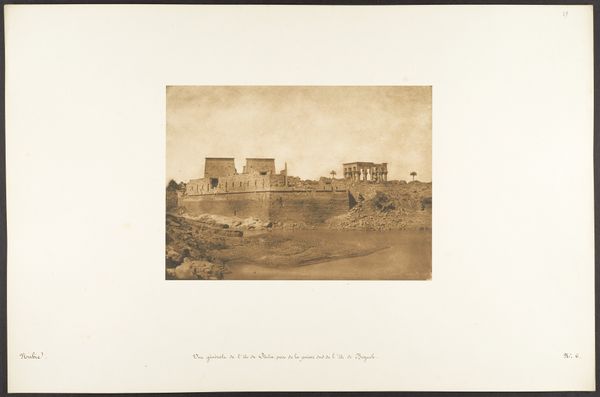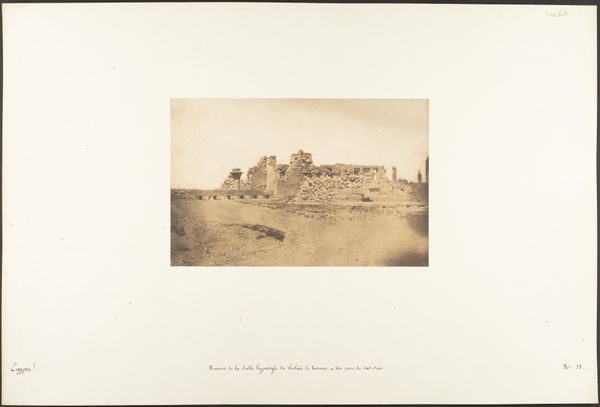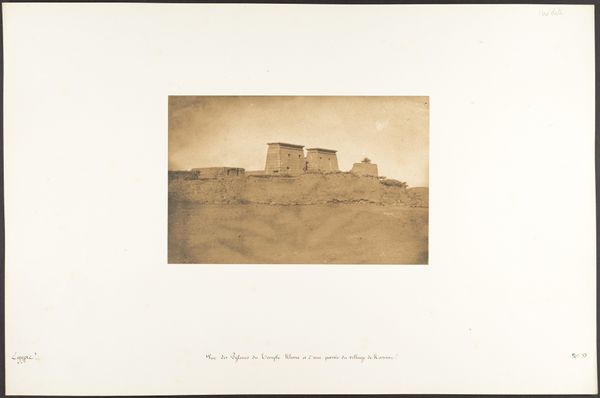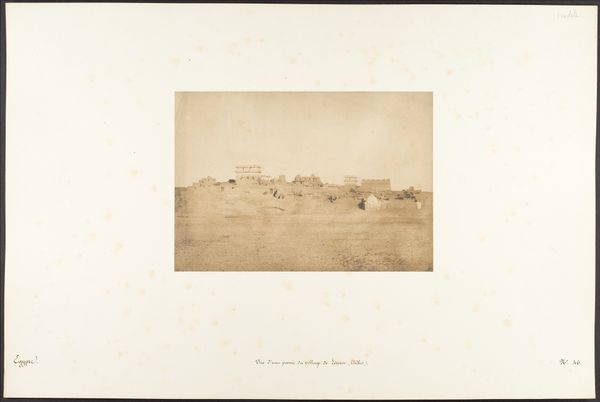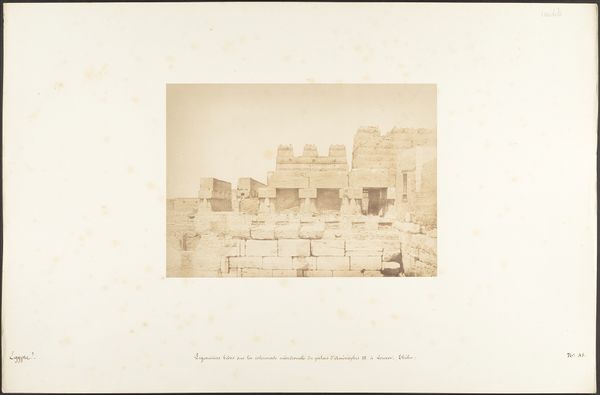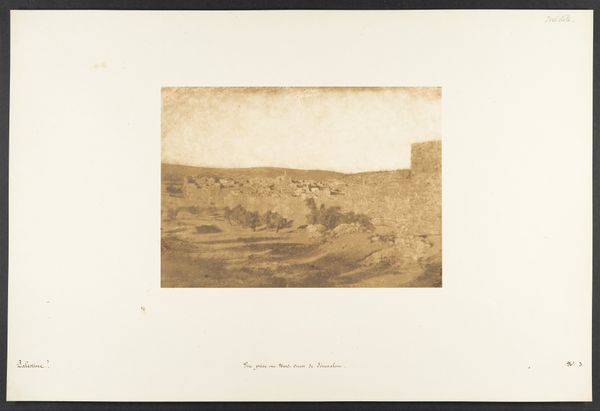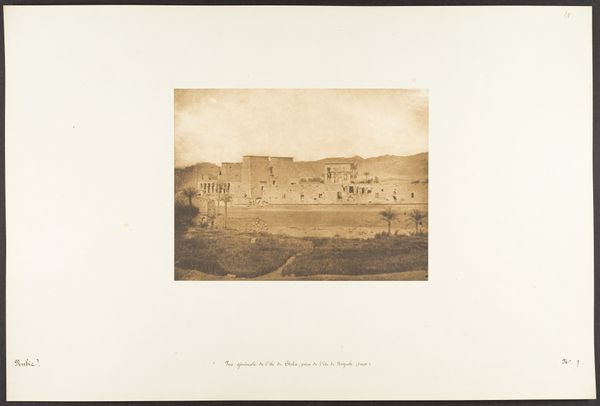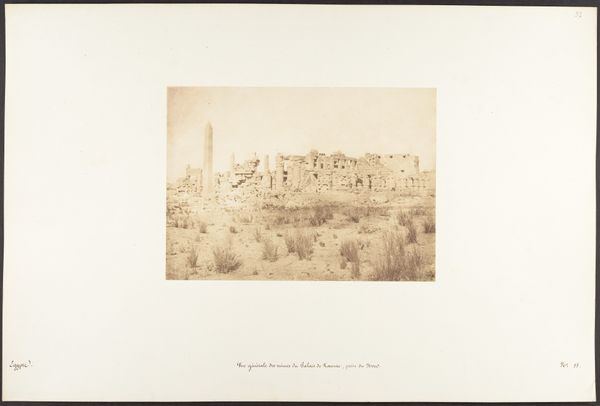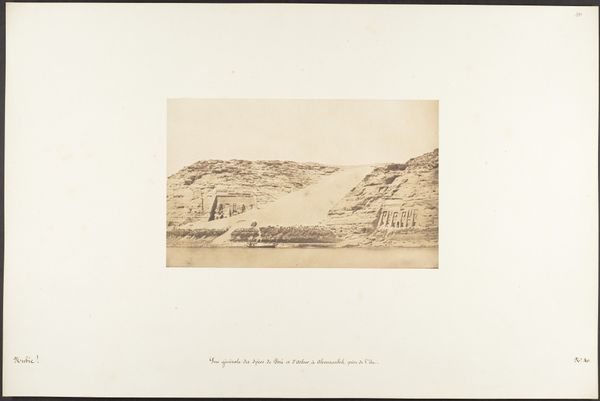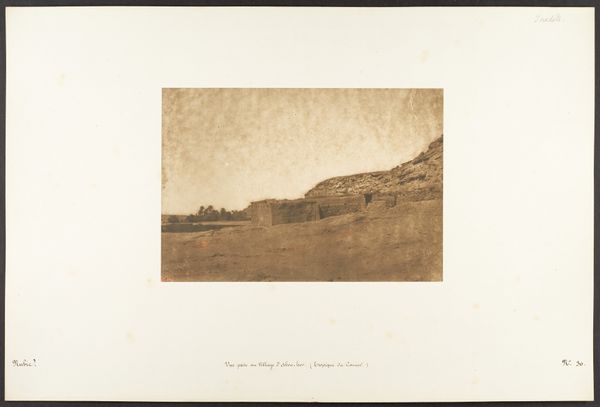
daguerreotype, photography, architecture
#
daguerreotype
#
photography
#
orientalism
#
cityscape
#
islamic-art
#
architecture
Dimensions: Image: 6 5/16 × 8 9/16 in. (16 × 21.7 cm) Mount: 12 5/16 × 18 11/16 in. (31.2 × 47.5 cm)
Copyright: Public Domain
Curator: Up next, we have Maxime Du Camp's daguerreotype, "Tombeaux Musulmans à Siout," taken between 1849 and 1850. The Metropolitan Museum of Art houses this example of his work. Editor: There’s something incredibly haunting about this image, a sepia dream of domes and walls. It feels like I’m looking at something ancient, slowly dissolving back into the earth. Curator: Precisely! Du Camp was commissioned to document Egypt’s historical sites, creating lasting visual records, using the relatively new daguerreotype technique. This photo becomes part of a broader Orientalist project, depicting a culture that was becoming, if I may, palatable, consumable by Western audiences. Editor: "Consumable" is an interesting word here, as it touches on a sense of exploitation or appropriation. You sense that this isn't just about preserving, but about a specific gaze – almost like hunting for relics, through a lens. The clarity achieved despite being early photography also heightens a very tangible realism in terms of architecture, the light and textures – it’s strangely affecting. Curator: It’s a controlled view, too. Look at how he frames the tombs—a fortified space set off at a remove, both inviting and forbidding to its Western audiences. The gaze is shaped through travelogues and publications. Editor: Yes. Travel literature definitely romanticized the Orient at this time. But doesn’t the crumbling architecture suggest not only an objectified “other”, but also impermanence and maybe also invites some musings on one’s mortality? Curator: Indeed, its ruinous state, however romanticized, subtly suggested to Western eyes a civilisation fading and decaying. The "East" had its moment, now was for "us" to learn its lesson. Editor: It really does give you pause, doesn't it? A powerful image for the way it freezes history and evokes it—literally and figuratively.
Comments
No comments
Be the first to comment and join the conversation on the ultimate creative platform.
